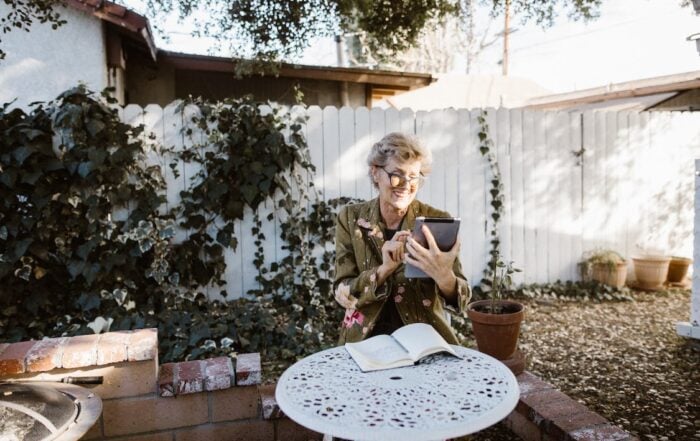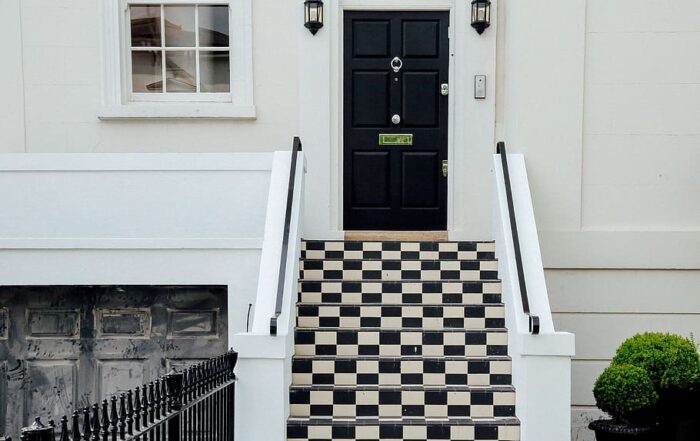
Zoom Conference Room Setup Guide
Date Posted:
November 8, 2021
Share This:
The COVID-19 pandemic sparked a global transition when public health protocols required employees to move from the office to home.
Fortunately, remote work is now second nature to most people. As a result, video-conferencing platforms like Zoom serve as vital outlets for teams and clients to stay connected.
As offices begin to fill back up, Zoom will likely continue to be the most common video conferencing platform.
That’s why creating a designated room for Zoom conferences with employees, partners and clients outside the office helps teams stay productive, up to date and — most importantly — connected.
[Related: Guide to Creating a High-Tech Home Office]
Find Your Ideal Zoom Conference Room Setup
Your room size, expected number of attendees and target group interaction level are key. Why? Those factors help determine which conference room style is best for your workspace.
Here are some questions to ask yourself when finding your ideal Zoom conference room setup:
- Will you have a moderator or facilitator? If so, you’ll want a setup that keeps the speaker in front of attendees so they’re in clear view.
- How many people do you predict will routinely attend? Zoom conference room setups differ based on your group’s size. For example, auditoriums are better for larger groups with more than 30 people, and a U-shape is better for 20 or fewer people.
- Does your company have a hybrid work model, or do most employees work from home and plan to attend virtually? Tracking technology (like that from Neat for Zoom Rooms, discussed below) and enhanced display setups help both in-office and at-home attendees share more productive Zoom conferences.
- Is group interaction required? Certain conference room styles don’t truly facilitate group interaction, such as the classroom and U-shape types. If your company focuses on group work or discussion, opt for a banquet style.
Zoom offers virtual audio and video conferencing, screen sharing, live chats and other collaborative features (like webinars). Designating a meeting room for Zoom conferences makes check-ins, interviews and anything else requiring a video platform far more convenient.
[Related: What Is an Audiovisual Consultant?]
Your Zoom Conference Room Setup: The Main Types
Your company’s ideal Zoom conference room setup style will let everyone in the room see one another easily.
Consider the conference room sizes available in your building, the number of people who usually attend and the layout that’ll work best for your company.
Here are the most common conference room setup types:
- Boardroom. This style uses a large table or a group of smaller tables with seating around its circumference. It’s ideal for groups capping around 30 people, but attendance depends on room size.
- U-shape. This style works great for presentations that need focus at one end of a room. It’s standard for presentation-centric conferences or meetings with a single speaker. Usually, a U-shape style caps attendance at around 50 people.
- Classroom. This style can accommodate various numbers of attendees, depending on room size. All attendees sit at tables facing the front of a room, where the presenter faces the group.
- Hollow square. This style is ideal for group discussions hosting about 20 to 30 people. The facilitator is in the square’s center, and attendees surround them. For a Zoom conference, you can place displays on a front wall. Attendees have their personal laptops open, with the Zoom meeting onscreen.
- Banquet. This style easily accommodates eight to 10 people per table group. You often set up a monitor at each table for the group to listen to a speaker or to simplify small breakout sessions.
- Auditorium. This is a theater-like style, similar to but larger than the classroom. It accommodates Zoom conferences or announcements that need to reach a large group of people.
Your Zoom Conference Room Setup: Equipment
You probably know this already, but investing in quality equipment makes all the difference during important meetings. Here are some areas to consider once you have a Zoom room setup and network connection.
Video Displays
Your display setup should take these factors into account:
- Size
- Type of display — projector, liquid crystal display (LCD) or light-emitting diode (LED)
- Mounting height
The general rule for video display is to have a diagonal screen size that covers about half the room’s length. This is critical so that everyone present can easily see flowcharts, spreadsheets, documents and anything else.
Audio Systems
High-quality audio is arguably the most important part of a Zoom conference room. You can get by in a meeting without visuals, but audio is usually a must. Plus, technical problems and interruptions slow workflows — and are frustrating to fix.
At AV Smart Solutions, we use a built-in DSP processor that covers every audio aspect of your Zoom conference room. That includes the speakers, the microphones and a built-in DSP. Plus, you can mix and match ceiling, wall and table audio devices.
As a result, the Stem Ecosystem is versatile, making it a common choice for a Zoom conference room setup.
The right audio system focuses on quality rather than volume to give you full coverage. You shouldn’t have to worry about echo, feedback or other noise interference.
Cameras
Naturally, the best camera for your Zoom conference room depends on the meeting room size and setup type. The most popular conferencing camera is a USB camera because it accommodates any room size.
Smaller conference rooms (with 20 or fewer attendees) and rooms with banquet-style and group-centric setups typically benefit from these options:
- CAM 340+
- Huddly IQ
- Poly Eagle Eye Cube
- Jabra Panacast
Meanwhile, medium to large conference rooms work best with a CAM520 PRO, CAM540 or Logitech Rally for optimal viewing.
Interactive Whiteboards
Interactive whiteboards have become increasingly popular for brainstorming and general discussion during Zoom conferences. Here are some whiteboard options:
Another great device option is Neat. That’s because it allows for annotations and whiteboard features alongside an immersive audiovisual (AV) setup. This video collaboration device includes a large touchscreen TV, wide-angle camera and outstanding audio system.
Room Schedulers
When you hold Zoom meetings, planning them can be a pain.
Room schedulers are software programs that help you easily manage meetings. You can integrate room scheduling software into your Google Calendar, Outlook account and more to make sure meetings never go double-booked or conflict with attendees’ schedules.
Additionally, room schedulers help your meetings stay organized by starting and ending on time. With most room scheduling programs, you can move into huddle rooms easily.
Furniture
You’ll of course need tables and chairs, but the number and placement depend on your Zoom conference room setup style. First, select your ideal setup. Then, coordinate furniture, screens, displays and plug-in features accordingly.
Power Supply
Ample power supply is essential — whether you have a video wall, a single large display screen or multiple smaller screens. Ensuring your AV setup has the appropriate outletting avoids future complications (and hassle).
[Related: What To Look for in AV Installation Companies]
Zoom Conference Room Solutions From AV Smart Solutions
At AV Smart Solutions, we offer innovative, scalable technology that integrates seamlessly into offices. When you need a perfect Zoom conference room setup, we’re here to help.
We offer premium AV features with touch-panel controls, and we modify them specifically so that each attendee has the same branded experience.
Contact us to learn more about our offerings or to begin planning your Zoom conference room! Call (425) 655-5052 or fill out our online inquiry form for a free consultation with an AV expert.


